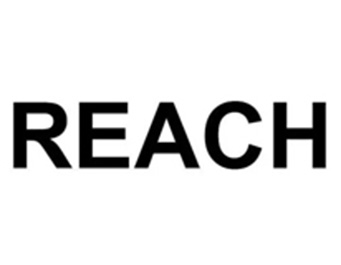REACH Certification

Details
As of June 2025, the candidate list of substances of very high concern (SVHC) under the EU REACH regulation has been updated to 247 items:
REACH test item classification
SVHC (Substances of Very High Concern) detection:
As of June 2025, the SVHC list consists of 247 items (all non-metallic materials need to be tested, while 73 items for metallic materials are usually tested).
This includes CMR (carcinogenic, mutagenic, and reproductive toxic) substances, PBT (persistent, bioaccumulative, and toxic) substances, vPvB (highly persistent and highly bioaccumulative) substances, etc.
2. Restricted Substances (Annex XVII) :
It involves 71 restricted substances, such as lead, cadmium, phthalates, azo dyes, etc.
3. Physical and chemical property tests (such as density, melting point, boiling point, etc.).
4. Toxicological and ecotoxicity tests (such as acute toxicity, biodegradability, etc.).
Testing requirements for different materials:
| Material type | The number of SVHC test items | Main test standards |
| Non-metals (plastics, textiles, etc.) | 247 items | IEC 62321, EN 14372, etc |
| Metals (alloys, coatings, etc.) | 73 items | ISO 17075, IEC 62321, etc |
247 chemical substances. These substances are classified as having serious hazardous properties (such as carcinogenicity, mutagenicity, reproductive toxicity, persistence or bioaccumulation, etc.). The following are the main classifications of SVHCS and some typical substance examples:
I. Core Classification of 247 Substances of SVHC:
CMR substances (carcinogenic, mutagenic, reproductive toxic)
- Example:
-Benzo [a]pyrene
Cadmium and its compounds
Di (2-ethylhexyl) phthalate (DEHP)
2. PBT/vPvB substances (Persistence, bioaccumulation, Toxicity):
- Example:
Perfluorooctanoic acid (PFOA) and its salts
Hexabromocyclododecane (HBCDD)
Short-chain chlorinated paraffins (SCCPs)
3. Endocrine disruptors:
- Example:
-Bisphenol A (BPA
4-tert-butylphenol
4. Other substances of high concern:
- Example:
Nanomaterials (such as titanium dioxide nanoparticles)
Flame retardants (such as TBBPA)
Ii. Methods for Obtaining the SVHC List:
1. Official source:
- a complete list to check RECHA website: [SVHC candidate list] (https://echa.europa.eu/candidate-list-table)
- Supports screening by substance name, CAS number, and batch (batches 1 to 30).
Iii. Key Substances of Concern in Different Industries:
| Industry | Typical SVHC substances | Test standard |
| Electronic appliances | Lead, cadmium, hexavalent chromium, polybrominated biphenyls (PBBs) | IEC 62321 series |
| Textiles | Azo dyes, nonylphenol (NP) | EN 14362-1/3 |
| Toys | Phthalates(DEHP、DBP、BBP) | EN 71-3 |
| Automobile | Polycyclic aromatic hydrocarbons (PAHs), hexavalent chromium | ISO 17075 |
V. Some Newly Added Substances (2024-2025):
| Name of substance | CAS Number | Hazard attribute |
| TetrabromobisphenolA(TBBPA) | 79-94-7 | Endocrine disruptors |
| Perfluorohexylsulfonic acid (PFHxS) and its salts | 355-46-4 | Persistence and bioaccumulation |
| BisphenolS(BPS) | 80-09-1 | Reproductive toxicity |
Latest updates
ECHA usually updates the SVHC list every six months, and enterprises need to keep a close eye on it.
If the SVHC content in the product is greater than 0.1% (by weight) and the annual export volume is more than 1 ton, it is necessary to report to ECHA.
The latest SVHC list, can consult RECHA website (https://echa.europa.eu/candidate-list-table).

 Scan WeChat to chat
Scan WeChat to chat